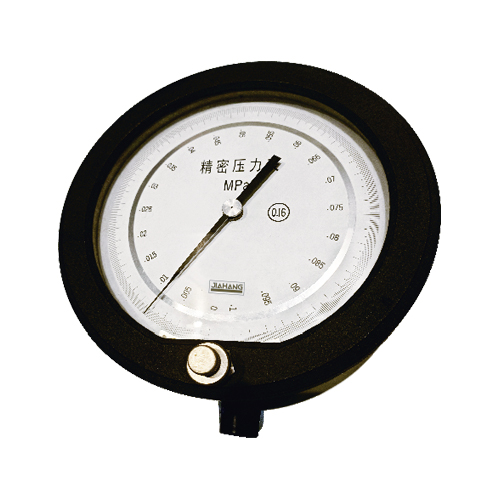
Nov . 26, 2024 23:17 Back to list
Reliable High-Temperature Differential Pressure Gauge for Accurate Measurements in Demanding Environments
Understanding High-Quality High-Temperature Differential Pressure Gauges
In various industrial applications, the measurement of pressure is crucial for maintaining operational integrity, safety, and efficiency. Among the numerous types of pressure measurement devices, high-quality high-temperature differential pressure gauges stand out for their unique ability to accurately measure the difference in pressure between two points, particularly in high-temperature environments. This article explores the importance, working principles, applications, and selection criteria of these specialized instruments.
What is a Differential Pressure Gauge?
A differential pressure gauge is a device designed to measure the difference between two pressure points. This measurement can be vital in processes such as fluid flow, filtration, and level measurement in tanks. The gauge typically consists of two pressure connections; one connects to the high-pressure source and the other to the low-pressure source. The instrument then displays the difference, helping operators determine system performance or detect potential issues.
Importance of High-Quality Measurements
The accuracy and reliability of pressure measurements are paramount in industries such as oil and gas, chemical processing, and power generation. High-quality differential pressure gauges provide precise readings, which are essential for
1. Safety In high-temperature applications, accurate pressure readings can prevent system failures that may lead to dangerous situations such as explosions or leaks.
2. Efficiency Understanding pressure differences allows for optimal process control, ensuring that systems operate within their designed parameters, thereby minimizing waste and improving energy efficiency.
3. Equipment Longevity High-quality gauges help in the early detection of equipment wear or malfunctions, which can extend the lifespan of critical components.
Working Principles
High-temperature differential pressure gauges operate on various principles, depending on their design. The most common types include
- Bourdon Tube This mechanical gauge utilizes a coiled tube that straightens as pressure increases. The movement is translated into a readable measurement through a dial. While often limited to moderate temperature ranges, high-quality materials can enhance its performance at elevated temperatures.
- Diaphragm-Based Gauges These gauges use a flexible diaphragm that deforms in response to pressure differences. They are particularly effective in high-temperature environments, as they can be manufactured from materials that withstand extreme heat.
- Capacitive Sensors Employing an electrical measurement method, capacitive sensors determine pressure differences based on changes in capacitance caused by diaphragm movement. These sensors provide high accuracy and can be designed for high-temperature conditions.
Applications
high quality high temp differential pressure gauge

High-quality high-temperature differential pressure gauges find applications in several sectors
1. Oil and Gas In this industry, maintaining pressure differences across valves and filters is crucial for operational safety and efficiency.
2. Chemical Processing Many chemical processes involve reactions at high temperatures. Accurate pressure readings help in optimizing these reactions and ensuring the safety of the process.
3. Pharmaceuticals In the pharmaceutical sector, controlled environments are critical for product safety. Differential pressure gauges monitor air pressure in cleanrooms and ensure compliance with stringent regulations.
4. Power Generation Differential pressure gauges are vital in monitoring systems like heat exchangers and steam generators, where temperature and pressure control significantly impact efficiency and safety.
Selecting the Right Gauge
When choosing a high-quality high-temperature differential pressure gauge, several factors should be considered
1. Temperature Range Ensure that the gauge can operate reliably at the maximum temperatures expected in the application.
2. Material Compatibility Select materials that can withstand the chemical properties of the fluids being measured to prevent corrosion and damage.
3. Accuracy Requirements Depending on the application, the gauge's accuracy should align with operational needs, balancing cost and performance.
4. Installation Environment Consider the physical environment where the gauge will be installed, including potential exposure to vibration, dust, or corrosive substances.
5. Calibration and Maintenance Regular calibration is essential for maintaining accuracy. Choose gauges that are easy to service or have maintenance contracts available.
Conclusion
High-quality high-temperature differential pressure gauges play a crucial role in various industries by ensuring accurate measurements that promote safety, efficiency, and longevity. By understanding their working principles, applications, and selection criteria, industries can make informed decisions that enhance their operational processes and maintain safety standards. Investing in quality gauges is not just a matter of compliance; it is integral to the successful management of high-temperature systems.
-
Bourdon-Type Differential Pressure Gauges High Accuracy & Affordable Pricing
NewsMay.22,2025
-
Vacuum Differential Pressure Gauges High-Precision Solutions & Quotes
NewsMay.22,2025
-
Durable Diaphragm Pressure Elements High Accuracy & Custom Quotes
NewsMay.22,2025
-
AG Precision Pressure Gauges High Accuracy & Global Exporters
NewsMay.21,2025
-
Ashcroft Diaphragm Pressure Gauges Precision & Durability
NewsMay.21,2025
-
Micro Differential Pressure Gauges High-Precision & Compact Solutions
NewsMay.20,2025
